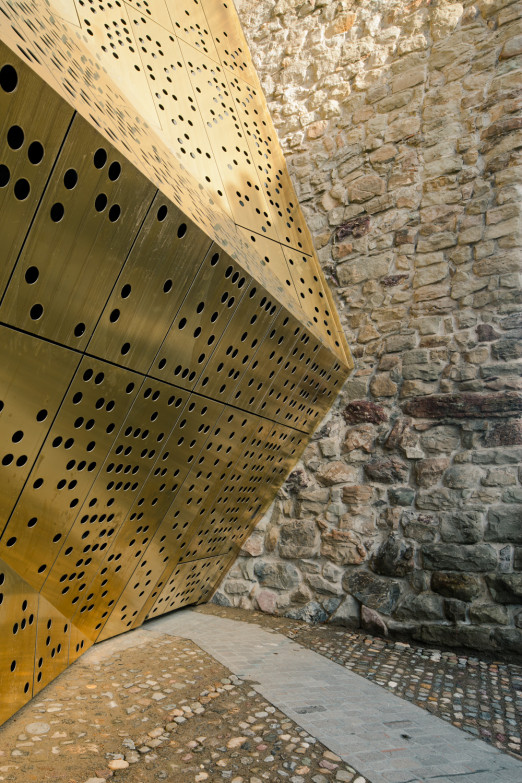It’s a new way of thinking, a different mindset: specifying an effective antimicrobial material for hygiene-sensitive environments to help break the chain of infection and curb the spread of disease.
The role of the environment in the spread of infection is well-established, and consequently architects and specifiers have a part to play, making design and material choices that will impede the transmission of bacteria and viruses between surfaces and facility users.
Copper touch surfaces are now available to provide a helping hand by killing bacteria, viruses and fungi before they can spread and cause infections.
What could be lurking on touch surfaces?
Disease-causing organisms—such as MRSA, Norovirus and Influenza—can survive on hard surfaces including door handles, taps, tables and light switches for months. Deposited by a touch or splash, they can be transferred with further touches to other surfaces. In the case of Influenza, once picked up it has been shown to spread to the next seven surfaces touched.
Antimicrobial copper
Germs can’t survive on copper. This antimicrobial activity is inherent to the metal, requiring no special treatment or maintenance, and it shares this benefit with a range of widely-used copper alloys—such as brass, bronze and copper-nickel—creating a family of hygienic, solid materials called ‘antimicrobial copper’.
Antimicrobial copper’s efficacy has been proven against wide range of bacteria, viruses and fungi, tested in laboratories under typical indoor conditions. No organism tested has been able to survive on an antimicrobial copper surface.
Clinical trials in a variety of hospital wards have shown an 80% reduction in bacteria on copper surfaces compared to non-copper equivalents. A multi-centre trial in US hospitals further showed that replacing just six touch surfaces in an ICU room with antimicrobial copper items reduced a patient’s risk of acquiring an infection by 58%.
A helping hand
Hospitals, schools, mass transit hubs and other areas where people gather and infection can spread are starting to adopt this new technology, upgrading frequently-touched surfaces such as hand rails and door furniture to equivalents made from solid antimicrobial copper.
These surfaces work 24/7, in between regular cleaning. They are durable, with no treatment or coating that can wear away with time and use, and fully recyclable at end of life.
Copper that looks like stainless steel?
Antimicrobial copper is available in a wide range of colours, from copper-red, through the golden brasses and rich brown of bronzes right up to the silver-coloured copper-nickels, which are virtually indistinguishable from stainless steel. The selection can be driven by aesthetic as well as hygienic considerations.
Cleaning
Antimicrobial copper surfaces can and must be regularly cleaned as any other touch surfaces are, to remove soiling. They will darken over time, but this change in appearance does not affect their antimicrobial efficacy.
What to upgrade
The surfaces to prioritise are those that are most-frequently touched in a given environment. For an airport, that may include check-in desks, hand rails and bathroom taps and grab rails. In a hospital, surfaces in closest proximity to a patient—such as door furniture, bed rails, bedside and overbed tables, IV poles, grab and hand rails—are most likely to become contaminated.
An online directory is available at www.antimicrobialcopper.org, listing products from companies around the world marketing antimicrobial copper surfaces approved under the Cu+ scheme, which provides specifiers reassurance they are buying from companies that produce and market in line with strict guidelines based on the body of scientific research.
Is antimicrobial copper affordable?
Material typically makes up a small percentage of a product’s cost, meaning antimicrobial copper touch surfaces can be an affordable and attractive proposition for new-builds and renovations. Any price difference has to be weighed against the benefits of delivering a safer environment.
Where is it being used?
Installations are taking place around the world in hygiene-sensitive environments such as hospitals, care homes, schools, train stations and airports.
UK installations include silver-coloured door furniture at The Sir Robert Ogden Macmillan Centre and Homerton University Hospital, a suite of brass surfaces at The Bostonian Sleep Clinic, and pure copper door furniture at Sheffield Northern General Hospital’s Cystic Fibrosis unit, which aimed to ‘set the gold standard for infection prevention’ as a facility for patients especially vulnerable to infection.

Pure copper door furniture at Sheffield Northern General Hospital
RIBA-accredited CPD
A presentation is available to provide further details on specifying antimicrobial copper, and is accredited for CPD by RIBA. You can view it online by visiting the antimicrobial copper website, or arrange for an in-house CPD.
More information
To learn more about how to make a material difference to the safety of a facility’s users:
- Visit www.antimicrobialcopper.org for detailed information on the scientific research behind antimicrobial copper, case studies, the product directory and more.
- Browse the Architect/Designer section under Join the Supply Chain for resources including the RIBA-accredited CPD.
- Find the industry specification and brochures in News and Download Centre > Brochures.
- Email info@copperalliance.org.uk to arrange an in-house CPD.
An industry specification (AMC 226-0: 2016) has been developed—in the absence of building specifications or classifications relating to these materials—for specifiers wishing to include Antimicrobial Copper in their projects. It can be downloaded from News and Download Centre > Brochures on www.antimicrobialcopper.org.






.jpg)



